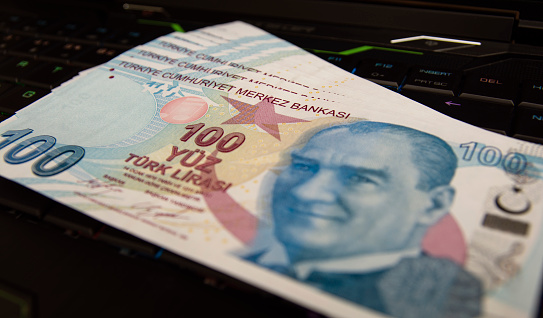Market Update
It is a bit of a mixed picture for global equity markets at the start of the new week; a further pullback from recent highs in long-term US government borrowing costs (the US 10-year yield is down around 4bps on the day to under 1.70%) is giving interest rate sensitive stocks, namely big tech, a helping hand and thus Nasdaq 100 futures (up 0.7%) are outperforming this morning (S&P 500 futures are up just 0.2% and whilst Dow futures are down 0.1%). As far as US equity investors are concerned, not a great deal has changed over the weekend. US/China talks did not lead to a major breakthrough in relations as expected and investors are more focused on key events this week including a heavy slate of Fed speak (including Fed Chair Powell who is speaking on three occasions), preliminary US Markit PMIs on Wednesday and US Core PCE inflation data on Friday (the Fed’s favoured gauge of inflation). These events are likely to be the major macro movers of the week, not just for US equity markets, but also for bonds, USD and precious metals.
Returning back to global equities; Europe is a mixed picture (Stoxx 600 is up 0.1%), with tourism/travel sensitive IBEX 35 (down 1.4%) the big underperformer this morning as 1) the pandemic situation on the mainland deteriorates and 2) as UK government officials hint at travel bans continuing into the summer amid fears the UK could import more vaccine resistant Covid-19 strains. With regards to an update on the state of the pandemic in the EU; Germany is reportedly set to announce a fifth lockdown extension, Paris (and 15 other French regions covering 40% of the country’s economy) is now back in lockdown. Meanwhile, a lot of press attention has been focused on how the EU might soon begin to block the exports of vaccines to the UK amid the bloc’s ongoing contract dispute with AstraZeneca. This latter piece of news has not seemed to impact markets just yet, but if EU/UK tensions escalate this could hurt GBP and could well pass through to European equity markets.
Looking at other asset classes; despite lower yields and a slightly softer USD this morning (the DXY has been undulating either side of 92.00 level and currently trades just below it), precious metals are having a rough time – the selling appears to be technical, with both spot gold and spot silver having broken to the downside of recently former bearish flags. The USD is likely to continue to trade somewhat rangebound ahead of the aforementioned key risk events later in the week, meaning after technical selling pressure from this morning’s bearish breakout abates, precious metals are likely to fall into a holding pattern as well. Elsewhere, crude oil markets are trading with very modest losses but within recent ranges as traders mull what is next for the complex after last week’s sharp sell-off that at the time was triggered by a combination of concerns regarding 1) the worsening EU demand outlook as the bloc heads back into lockdown, 2) rising US inventories and 3) concerns further inventory build lay ahead as oil speculators take advantage of the term structure of crude oil futures having gone into contango in the short-term.
FX Markets
There has been a lot of attention on TRY over the last few days; last Thursday, after the CBRT delivered a larger than expected rate hike of 200bps to 19%, USDTRY dropped all the way under 7.20. However, the 200bps hike appears to have been the last straw for Turkish President Erdogan and he fired the CBRT Governor over the weekend, prompting USDTRY to surge all the way back to 8.00 – note that President Erdogan holds the unconventional belief that higher interest rates lead to higher inflation and essentially wants the CBRT to lower interest rates in order to bring down inflation, contrary to typical economic thinking in most of the rest of the world. The fear is that his meddling in the country’s central bank policy will put further downwards pressure on the lira and worsen the country’s currency/economic crisis.
Turning to the G10; CHF could perhaps be deriving some European safe haven demand given its relative proximity to events in Turkey and hence it sits atop the G10 performance table this morning, up close to 0.4% on the day versus the buck. Elsewhere, FX markets are very much subdued ahead of key events this week, EUR and NZD are the next best performers, up around 0.2% on the day versus the dollar, with EURUSD having recovered from a brief dip under 1.1900 back towards 1.1930 and NZDUSD having bounced firmly at the 0.7140 area now trading in the 0.7170s. The key events in the week ahead of these two currencies will be preliminary March EU PMI data released on Wednesday and New Zealand February trade data released at the start of Wednesday’s APac session.
CAD, AUD, JPY and GBP are all narrowly mixed, with not much by way of fundamental updates for any of the four; USDCAD continues to pivot 1.2500, AUDUSD continues to trade in the low 0.7700s, USDJPY continues to range just below 109.00 and GBPUSD is stabilising in the 1.3850 region. A speech from BoC’s Gravelle, preliminary PMIs out of Australia, the UK and Japan on Wednesday and a raft of other important UK data releases (jobs on Tuesday, CPI on Wednesday and retail sales on Friday) and BoE speak (BoE governor Bailey speaking on Tuesday and Thursday) will be the main events of the week for these currencies.
Day Ahead
Four Fed officials are on the speaking slate for today and their comments are worth watching, though none are expected to deviate much from the Fed’s typical dovish script. Otherwise, the only data of note is February existing home sales out of the US, which is unlikely to move markets. That means pandemic updates are likely to remain at the forefront.




